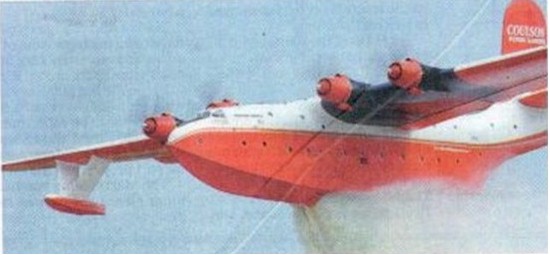|
Famed Martin Mars water bomber could be headed to museum. Excerpt from Times Colonist article by Darron Kloster The last airworthy Martin Mars water bomber is headed to the B.C. Aviation Museum in Sidney. The 'Hawaii Mars' owned by Port Alberni-based Coulson Groups of Companies, hasn't been used to fight wildfires since 2015 and has been tethered to a dock in Sproat Lake since its retirement eight years ago. "It would be one big jewel - make that a boulder - in our crown at the B.C. Aviation museum," Steve Nichol, president of the B.C. Aviation Museum, said in an interview. The Martin Mars is a storied beast. Only seven were ever made by the California-based Glenn Martin Company, all for the U.S. Navy as ocean patrol and long range transport during the Second World War. Most were used for naval cargo on the San Francisco-Honolulu route until 1956. The last four, sold as scrap, were bought by a B.C. forestry consortium and later converted to water bombers. One Mars crashed while firefighting in Northwest Bay near Nanoose Bay in 1961 with the loss of four crew, and another was critically damaged in a storm. The remaining two Martin Mars bombers were acquired by the Coulson Group in 2007 from Timberwest and its subsidiary, Forest Industrial Flying Tankers. The 'Philippine Mars', painted blue and white, was retired in 2012 and isn't considered air-worthy. The red and white 'Hawaii Mars' had its last fire season in B.C. in 2015, when it secured a 30-day contract with the B.C. province. The massive water tankers fought fires in British Columbia and other provinces for more than half a century. They were the largest fixed-wing water bombers in the world, with wing spans of 200 feet and bodies 120 feet long, and the ability to carry about 6,000 gallons of water. |
 |
